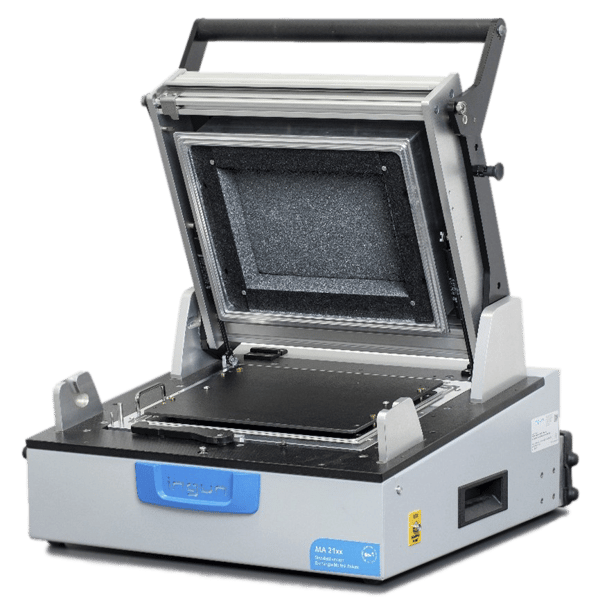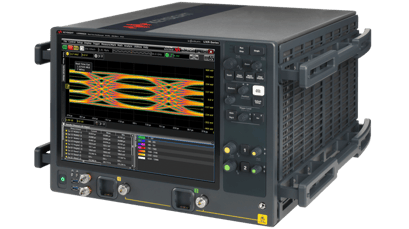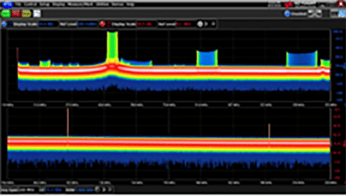To say that wireless devices are ubiquitous in our society today would be a vast understatement. In fact, sometimes it seems like wire is only used today for fencing livestock and stringing guitars. The same is true for the use of wire for communications and connectivity—it is diminishing rapidly.
The Growing Popularity of Wireless Consumer Products
Walking through an electronics production facility, you’ll notice that nearly every product—simple to complex—leverages wireless capabilities. Entertainment speakers, barcode scanners, and home security cameras, for instance, all have wireless capabilities. While it might have been easy to predict some products fitting in a wireless application, others haven’t been so obvious. There are now barbecue grills with Bluetooth, for instance, wireless bicycle gear shifters, and wireless meat thermometers. I didn’t know there would even be a market for those, but now I want one.
Addressing the Challenges of Advancing Wireless Technologies
New technologies come with new challenges. Marconi (who, in 1897 achieved the first tangible demonstration of communication using radio waves), would scoff at the word “new” since products using radio frequencies (RF) have been around for decades. Yet, in the manufacturing environment, the presence of wireless products brings about new technical challenges. Today, nearly every product has at least some level of wireless capabilities. Consequently, product manufacturing environments are jammed with a myriad of different types of RF energy. From low-band frequencies (below 1 GHz) to high-band frequencies ( >24 GHz), the air is murky to an RF product during production testing.
As products migrate into the mmWave 5G spectrum, containment of RF energy becomes more difficult. Long waves (low frequencies) are attenuated more easily by less exotic, thin materials. Short waves (high frequencies) require new, more novel techniques for shielding. Since it is a given to maintain quality levels, electronics manufacturing companies need to employ production test solutions for a wide variety of products. There are many factors which drive the selection of production test tools and techniques. For example, radio complexity, transmission frequency, radio uniqueness, radio transmission power, and standard communication protocol versus proprietary all need to be considered.
To Test or Not to Test?
Whether an RF product or a new toaster is being tested, overdesigning a test solution is unwarranted. In-depth parametric testing may be necessary to prove a complex radio meets specific radio performance characteristics but parametric testing is nearly always relatively expensive. Conversely, test equipment to test basic Bluetooth (mid-band) functionality may cost less than $1000. However, if one deems it necessary to test specific Bluetooth radio parameters with emulated network traffic, the cost will be several thousand dollars.
Highly integrated radios (e.g., the Texas Instruments CC2640R2Fz) typically do not require extensive testing since the radio is incorporated at the silicon level and tested as part of the fabrication process. Generally, a go-no-go functional test is adequate for a highly integrated radio. Relying on automated vision inspection techniques, an in-circuit (IC) test, and boundary scan testing is adequate to be sure an integrated radio IC is properly placed and soldered. A simple “ping” and expected response is generally an adequate functional test for the integrated radio. Testing can be as simple as using a Raspberry Pi and completing a Received Signal Strength Indicator (RSSI) measurement.
Bluetooth Testing, Shielding
Bluetooth in the manufacturing environment is fairly benign. Using a known MAC address and the durable technique of frequency hopping inherent to Bluetooth communication, random noise and nearby products are generally not too troublesome.
Devices under test (DUT) which require a quiet radio frequency test environment or those that require containment of DUT emissions are best tested with appropriate shielding. Shielding is required for all sides of the DUT, retaining or rejecting RF energy. Holes in the shield for cables, ventilation, and fasteners may all present the potential for RF energy “leaks.” The higher the frequency, the smaller the wavelength, and thus, the tighter the containment needs to be. For Bluetooth, a hole in the shielding less than approximately three (3) cm can be tolerated.
*That is relatively large considering the size of a hole in a shield opening for high-band communications (24 GHz) starts at 0.3 cm (3 mm) and decreases as the frequency increases.
*300,000,000 (speed of light) / 2,400,000,000 (Bluetooth frequency) x 1/4 = 3.125 cm
Shield Test Solutions
Fortunately, there are off-the-shelf shielding solutions to accommodate these high-band frequencies. INGUN Technologies, for example, offers numerous test shielding solutions. INGUN has an easy-to-integrate RF test fixture platform that allows for dedicated single product testing and can quickly exchange the product spring probe contact nest to accommodate multiple products in a high-mix, low-volume environment. The RF exchangeable kits (ATS) can accommodate product sizes up to 476 mm (W) x 240 mm (D) x 49 mm (H) depending on the product and testing frequency range. This customizable RF chamber has been implemented into Benchmark test solutions to achieve required wireless testing.
This INGUN ATS kit offers many features which makes it a good match for Benchmark wireless testing needs, including:
- ESD-compliance
- High-precision RF chamber made from aluminum
- Outstanding shielding > 60 dB in the frequency range up to 6 GHz
- Reliable, RF-compliant shielding from externally acting and internally radiating interference signals
- EMC-compliant RF transfers to connect to test fixture electronics and the product during test
- Individually configurable, easily accessable RF interface
- Platform cycle options ranging from 500k to 2m actuations

With good shielding, parametric testing is more reliable and repeatable.
Instrumentation Solutions
As the RF spectrum fills and communication technologies become increasingly faster with more dense communication packets, developers of test measurement instrumentation endeavor to stay one stroke ahead of the RF wave.
Some products can span a large portion of the RF spectrum. In some cases, the wide bandwidths that are required exceed the intermediate frequency (IF) bandwidths of commercially available RF spectrum analyzers and vector (or FFT) signal analyzers. Coupled with the higher operating frequencies, this creates a significant set of challenges for RF test engineers. High-band frequencies can be measured by using commercially available or custom-made downconverters. The downconverter hardware may alter or add spurious noise, masking the radio’s actual performance.
 In the race to catch the RF wave, Keysight offers oscilloscopes with high-band measurement capabilities. For example, Keysight’s UXR Series Real-Time Oscilloscope offers up to four (4) channels at 110 GHz of bandwidth, 2 Gpts per channel of memory, and 320 MHz RTSA. The UXR’s RTSA, Frequency Mask Trigger (Selective Plotting), Amplitude Modulation (Envelope Mode) to create radar envelopes, and Gated FFT Measurements enable RF analysis that was never possible on an oscilloscope.
In the race to catch the RF wave, Keysight offers oscilloscopes with high-band measurement capabilities. For example, Keysight’s UXR Series Real-Time Oscilloscope offers up to four (4) channels at 110 GHz of bandwidth, 2 Gpts per channel of memory, and 320 MHz RTSA. The UXR’s RTSA, Frequency Mask Trigger (Selective Plotting), Amplitude Modulation (Envelope Mode) to create radar envelopes, and Gated FFT Measurements enable RF analysis that was never possible on an oscilloscope.
 When RTSA mode is selected, each displayed channel is shown in its own grid as a spectral density plot with a frequency span on the horizontal X axis and dBm on the vertical Y axis. Multiple overlapping, color-graded FFTs (using the "temperature" color scheme) are shown per plot.
When RTSA mode is selected, each displayed channel is shown in its own grid as a spectral density plot with a frequency span on the horizontal X axis and dBm on the vertical Y axis. Multiple overlapping, color-graded FFTs (using the "temperature" color scheme) are shown per plot.
 Using the Frequency Mask Trigger enables selective plotting.
Using the Frequency Mask Trigger enables selective plotting.
Whether deploying emerging high-speed bus technology, identifying spectral content of wideband RF signals, or analyzing transient physical phenomena, the truest representation of a product’s RF signal is needed. To gain this view, leveraging today’s leading-edge measurement equipment is required.
Let Us help you choose the right test
To be fiscally responsible, the best RF test solution should be chosen when developing a test strategy for manufacturing a wireless product. Fixture shielding, RF characteristics, and the specified tests can substantially impact the cost of an RF test solution. Lower frequency products require less complex testing and less complex shielding. Higher frequency products with novel radios or requirements for complex parametric testing drive the need for attention to RF dependencies ultimately resulting in a higher cost of test.
For guidance in developing the correct test for your RF needs, trust experienced test services providers. For manufacturing–ready, full-integration test services, reach out to Benchmark. If you require in-depth guidance and automated measurement stimulus, switching, and measurement instrumentation, contact Keysight Technologies, and for verified, ready, off-the-shelf RF fixture kits, contact INGUN Technologies.
